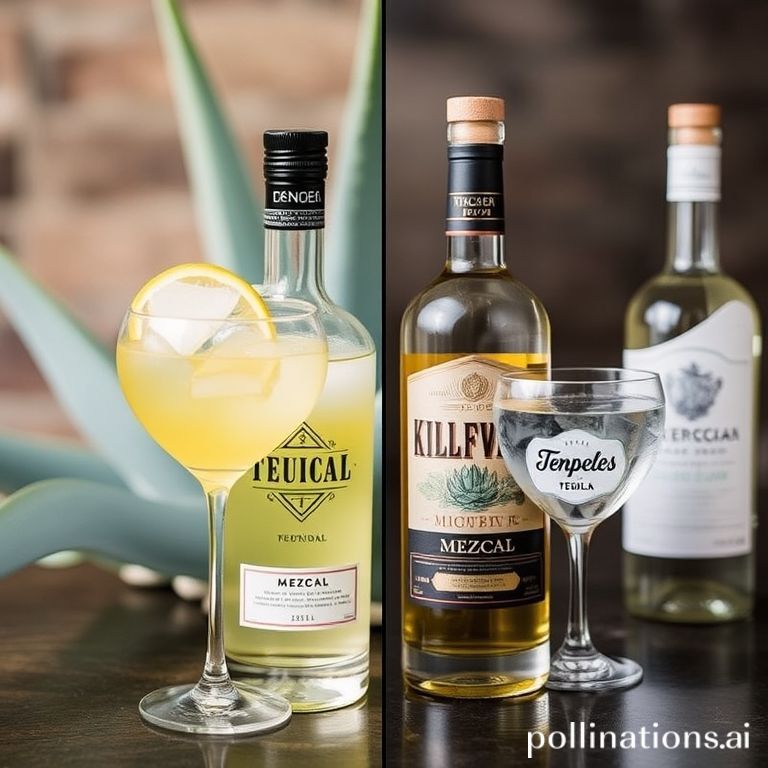Mexico’s agave spirits are renowned worldwide, but the nuances between them can be a delightful mystery. While both tequila and mezcal hail from the agave plant, their production methods, regional origins, and flavor profiles differ significantly. Understanding these distinctions unlocks a deeper appreciation for the rich heritage and craftsmanship behind each spirit.
Whether you’re a seasoned aficionado or a curious newcomer, exploring the world of tequila and mezcal is a journey of discovery. Let’s delve into the key differences that set these two iconic beverages apart, from the type of agave used to the final smoky notes that dance on your palate.
Agave Variety and Terroir
The most fundamental difference lies in the type of agave used. Tequila is exclusively made from the blue Weber agave (Agave tequilana), primarily cultivated in the state of Jalisco and designated regions. Mezcal, on the other hand, boasts a much wider range, allowing the use of over 30 different agave species. This diversity imparts a vast spectrum of flavors, influenced by the terroir – the unique combination of soil, climate, and environment where the agave grows.
Blue Weber vs. Other Agave Types
- Blue Weber Agave: Yields a sweeter, more predictable flavor profile, ideal for the mass production of tequila.
- Espadín Agave: The most common agave used for mezcal, known for its balanced and approachable flavors.
- Tobalá Agave: A wild, smaller agave that produces complex, floral, and earthy mezcals.
- Arroqueño Agave: A larger agave, taking many years to mature, resulting in intensely flavored, herbal mezcals.
Production Methods: A Tale of Two Processes
The production methods of tequila and mezcal also diverge significantly, influencing their distinct characteristics. Tequila production often involves steaming the agave in industrial ovens called autoclaves, followed by distillation in copper pot stills or column stills.
Mezcal production, however, typically adheres to more traditional methods. The agave hearts (piñas) are roasted in earthen pits lined with lava rocks, often fueled by wood or charcoal. This roasting process imparts the characteristic smoky flavor of mezcal. After roasting, the agave is crushed using a tahona (a large stone wheel) or by hand, fermented with wild yeasts, and distilled in small-batch copper or clay pot stills.
Flavor Profiles: From Sweet to Smoky
The variations in agave type and production methods result in dramatically different flavor profiles. Tequila, particularly Blanco or Silver tequila, often exhibits bright, citrusy, and slightly sweet notes with hints of pepper. Reposado and Añejo tequilas, aged in oak barrels, develop richer flavors of vanilla, caramel, and spice.
Mezcal, due to its roasting process and diverse agave varietals, offers a broader and more complex range of flavors. The smoky character is often prominent, complemented by earthy, vegetal, floral, and fruity notes. Some mezcals exhibit intense minerality, while others showcase subtle hints of chocolate or leather.
Exploring the Nuances
- Tequila: Typically smoother, sweeter, and more consistent in flavor, especially commercially produced varieties.
- Mezcal: Known for its smoky, complex, and often bolder flavors, reflecting the agave type and production techniques.
Regulations and Origin
Both tequila and mezcal are protected by Denominations of Origin (DO), meaning they can only be produced in specific regions of Mexico. Tequila is primarily produced in the state of Jalisco, with limited production allowed in parts of Guanajuato, Michoacán, Nayarit, and Tamaulipas. Mezcal’s DO is broader, encompassing Oaxaca, Guerrero, Puebla, Durango, San Luis Potosí, Zacatecas, Michoacán, Tamaulipas, and Guanajuato, with Oaxaca being the most prominent producing region.
Conclusion
While both tequila and mezcal are distilled spirits derived from the agave plant, their differences in agave variety, production methods, and regional origins result in distinct flavor profiles and cultural significance. Tequila offers a more consistent and often sweeter experience, while mezcal showcases a wider range of flavors, often characterized by its signature smokiness. Understanding these differences allows you to appreciate the unique craftsmanship and heritage behind each spirit, enriching your enjoyment of Mexico’s agave bounty.
Ready to dive deeper into Mexican culture? Check out our other articles on traditional cuisine, vibrant festivals, and hidden gems!
IMAGE: A close-up shot of two glasses, one filled with tequila and the other with mezcal, side-by-side on a rustic wooden table. In the background, blurred, are agave plants and a traditional mezcal still. The lighting is warm and inviting, creating a mood of discovery and appreciation for Mexican spirits. The style is high-quality, detailed photography. Colors include amber, gold, and earthy browns.


